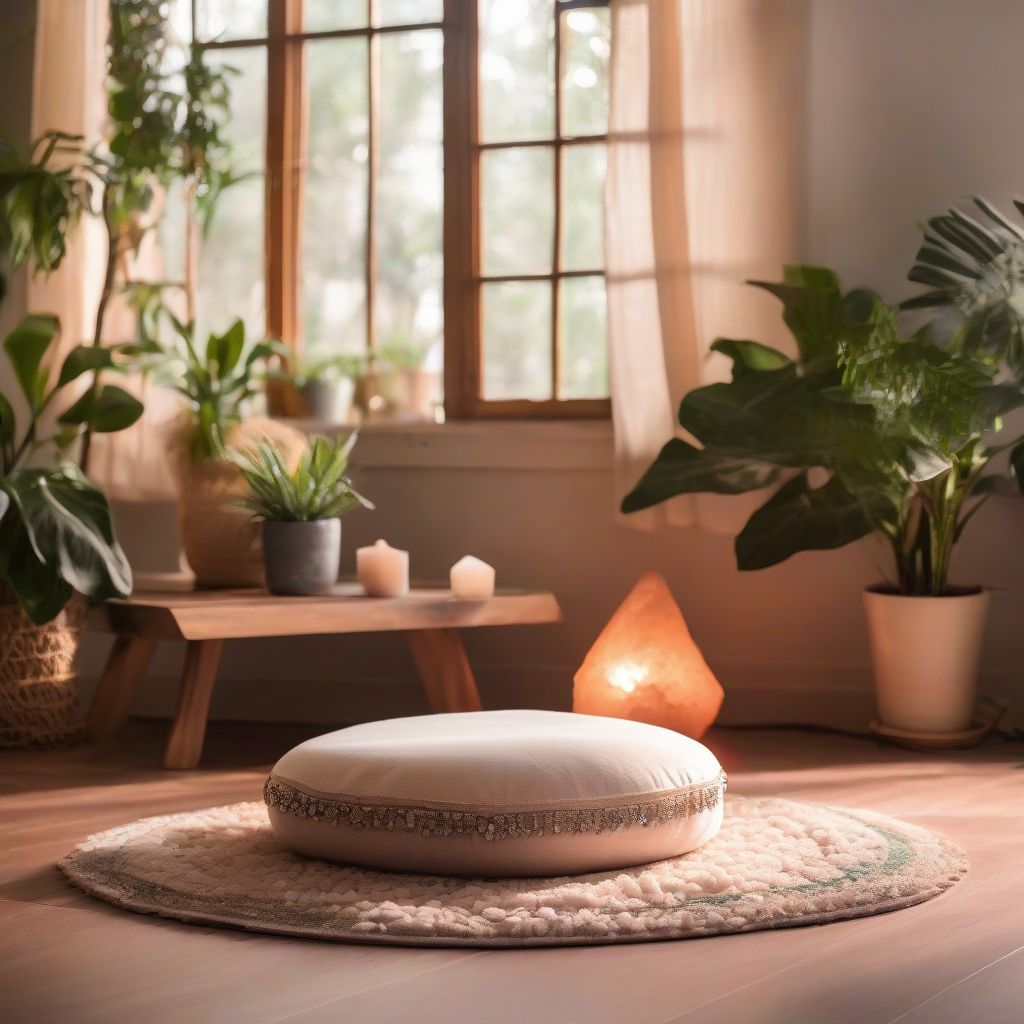Have you ever walked into your home after a long day, only to feel your shoulders tense up as you take in the clutter and chaos? Our homes should be our sanctuaries, a place where we can unwind and recharge. But too often, they become a source of stress and overwhelm. The good news is, by incorporating mindfulness into your living space, you can transform your home into a haven of peace and tranquility.
Understanding Mindfulness in the Home
Mindfulness, at its core, is about being present and aware of the current moment without judgment. Applying this to your home environment means creating a space that encourages conscious living and a deeper connection to yourself and your surroundings.
This isn’t about achieving picture-perfect minimalism. It’s about making conscious choices that align with your values and bring a sense of calm and joy to your everyday life.
Creating a Mindful Home: Practical Steps
Here are some practical steps to infuse your home with mindfulness:
1. Declutter and Simplify
 Decluttering Living Room
Decluttering Living Room
Clutter isn’t just physical; it’s visual and emotional too. It bombards our senses and makes it difficult to find peace. Start by decluttering one area at a time. Ask yourself:
- Do I use this item regularly?
- Does it hold sentimental value that sparks joy?
- Would I buy this item again today?
If the answer to these questions is no, it’s time to let it go.
2. Organize with Intention
Once you’ve decluttered, create a system for organizing what remains. Assign a specific place for everything, ensuring frequently used items are easily accessible. This reduces visual clutter and creates a sense of order, leading to a calmer mind.
Expert Tip: “A well-organized home can have a significant positive impact on mental well-being. It promotes feelings of control and reduces stress,” says Dr. Jane Peterson, author of “The Mindful Home.”
3. Engage Your Senses
Mindfulness is about experiencing the present moment through your senses. Engage them in your home through:
- Sight: Use calming colors like blues and greens. Natural light is key – open curtains and blinds to let the sunshine in.
- Smell: Incorporate aromatherapy diffusers with essential oils like lavender or chamomile for relaxation.
- Sound: Play calming music or nature sounds. Consider a white noise machine to minimize distracting sounds.
- Touch: Choose soft, natural fabrics for your furniture and bedding.
4. Designate a Mindful Space
 Meditation Corner
Meditation Corner
Creating a dedicated space for mindfulness practices can significantly enhance your experience. This could be a meditation corner, a reading nook, or even a comfortable spot by a window. Fill this area with items that bring you peace, like candles, plants, or inspirational quotes.
5. Mindful Eating Area
Your dining space plays a crucial role in mindful eating. Create a calm and inviting atmosphere that encourages you to slow down and savor your meals. Avoid distractions like television and phones.
[amazon bestseller=”mindful eating”]
Expert Tip: “Mindful eating is about paying attention to the sensory experience of eating. Savor each bite, noticing the flavors, textures, and aromas,” suggests Lisa Jones, Registered Dietitian.
6. Connect with Nature
Bringing elements of nature indoors can have a profoundly calming effect.
- Houseplants: Not only do they purify the air, but caring for plants can be incredibly therapeutic.
- Natural Materials: Incorporate furniture and décor made from natural materials like wood, bamboo, and stone.
- Natural Light: Maximize natural light by keeping curtains open during the day.
7. Mindful Technology Use
Technology, while useful, can be a major source of distraction and stress. Create technology-free zones in your home, like the bedroom and dining area. Set boundaries around screen time and designate specific times for checking emails and social media.
Conclusion: Cultivating a Haven of Peace
Creating a mindful home environment is an ongoing journey, not a destination. It’s about making conscious choices that support your well-being and bring you peace. By implementing these strategies and adjusting them to fit your unique needs, you can transform your house into a true sanctuary – a place where you can relax, recharge, and reconnect with yourself and those you love.
